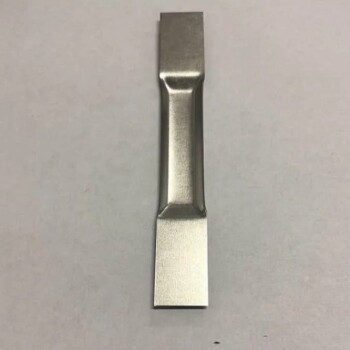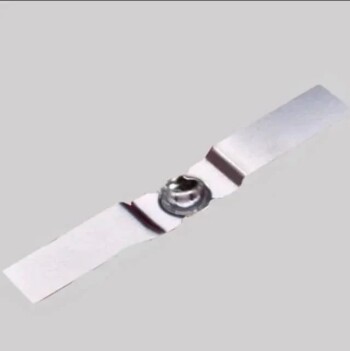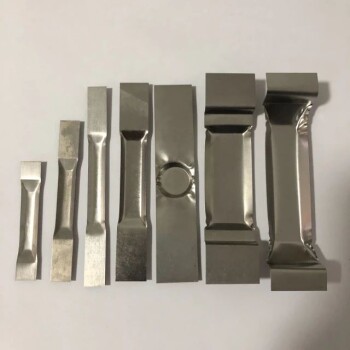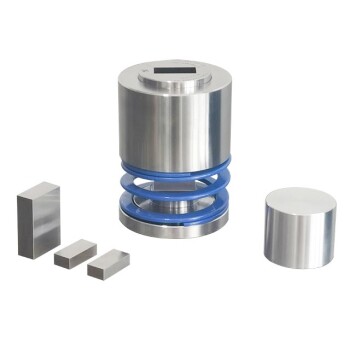In technical applications, Physical Vapor Deposition (PVD) is a family of vacuum-based coating processes that offers significant advantages, including superior hardness, wear resistance, and durability compared to traditional methods like electroplating. Its primary limitations are rooted in the "line-of-sight" nature of deposition, which can make coating complex geometries difficult, and the higher initial investment in equipment.
While PVD as a category offers exceptional material properties and environmental benefits, its true value is unlocked by understanding the specific trade-offs between its two primary methods: the speed of Evaporation versus the density and control of Sputtering.
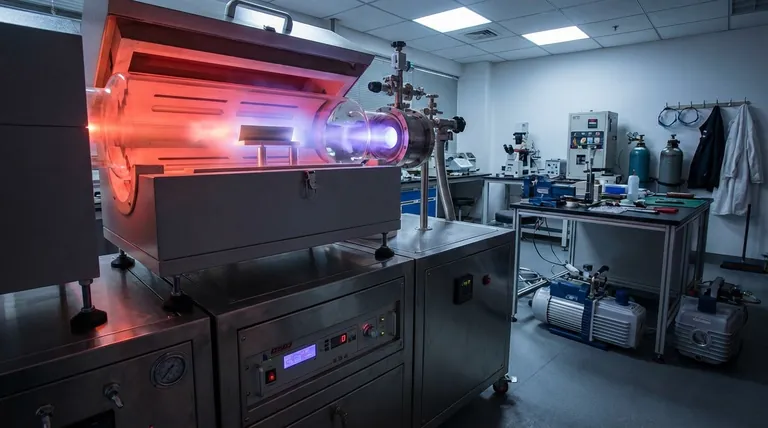
The Core Advantages of PVD
PVD processes are selected when a surface needs to be fundamentally enhanced, not just covered. The resulting thin films are physically bonded to the substrate, creating a new, high-performance surface.
Superior Material Properties
PVD coatings are exceptionally hard and corrosion-resistant. They can be engineered to reduce friction, increase lubricity, and act as a robust thermal barrier, extending the life and performance of the underlying part.
High Performance and Durability
These coatings exhibit high-temperature stability and excellent impact strength. Their inherent durability and abrasion resistance are so high that a protective topcoat is almost never necessary.
Unmatched Versatility
PVD can be used to deposit films from virtually any inorganic material, including metals, alloys, and ceramics. This process is compatible with a diverse group of substrates, from steel tools and medical implants to plastics and silicon wafers.
Environmental Responsibility
Compared to traditional coating processes like chrome electroplating, PVD is significantly more environmentally friendly. It avoids the use of hazardous chemicals and the associated waste disposal challenges.
The Fundamental PVD Techniques: Evaporation vs. Sputtering
While many PVD techniques exist, they are primarily based on two distinct physical mechanisms. Understanding this difference is the key to selecting the right process.
Evaporation: The "Boiling" Method
In this process, the source material is heated in a high vacuum until it vaporizes. These gaseous atoms then travel through the vacuum chamber and condense onto the cooler substrate, forming a thin film. This is analogous to water steam condensing on a cold mirror.
Common methods like Electron Beam PVD (e-beam-PVD) use this principle. It is generally a faster deposition process than sputtering.
Sputtering: The "Billiard Ball" Method
Sputtering uses a high-energy plasma to create ions, which are accelerated to strike a "target" made of the desired coating material. This bombardment ejects, or "sputters," atoms from the target, which then deposit onto the substrate.
This method produces films that are denser, more uniform, and have stronger adhesion than most evaporation techniques. High-Power Impulse Magnetron Sputtering (HiPIMS), for example, is an advanced sputtering technique currently considered ideal for high-wear applications like cutting tools.
Understanding the Trade-offs and Limitations
No single technology is a universal solution. The decision to use PVD, and which type to use, involves clear trade-offs.
The Line-of-Sight Problem
PVD is a line-of-sight process. The coating atoms travel in a straight line from the source to the substrate. This makes it challenging to achieve a uniform coating on parts with complex geometries, undercuts, or internal surfaces.
Deposition Rate vs. Film Quality
There is often a trade-off between speed and quality. Evaporation is typically faster but can produce less dense films. Sputtering is slower but yields coatings with superior density and adhesion, making it the dominant choice for high-performance industrial applications.
Substrate Heating and Stress
The energy transfer during PVD, especially in sputtering, can significantly heat the substrate. This may be unsuitable for heat-sensitive materials like certain plastics or polymers. Additionally, internal stresses can build up within the deposited film, which must be managed to prevent cracking or delamination.
Equipment Cost and Complexity
PVD systems require high-vacuum chambers, sophisticated power supplies, and precise process controls. The initial capital investment and operational complexity are considerably higher than for traditional methods like painting or electroplating.
Making the Right Choice for Your Goal
Your choice of PVD technique depends entirely on your project's specific priorities and the performance demands of the final product.
- If your primary focus is maximum coating density and adhesion: Sputtering, particularly advanced forms like HiPIMS, is the superior choice for demanding applications like performance tooling and medical implants.
- If your primary focus is high deposition speed on simpler geometries: Evaporation techniques can be more cost-effective for applications where ultimate film density is not the most critical factor, such as decorative coatings.
- If your primary focus is coating a complex 3D object uniformly: You must plan for the line-of-sight limitation with complex part rotation or investigate alternative, non-line-of-sight methods like Atomic Layer Deposition (ALD) or Chemical Vapor Deposition (CVD).
- If your primary focus is environmental compliance: Nearly any PVD process represents a significant improvement over traditional wet chemistry methods like electroplating.
By matching the specific PVD method to your application's unique demands, you can move beyond a simple coating and engineer a truly high-performance surface.
Summary Table:
| Aspect | Evaporation | Sputtering |
|---|---|---|
| Primary Mechanism | Heating material to vaporize | Plasma bombardment ejects atoms |
| Deposition Speed | Faster | Slower |
| Film Density/Adhesion | Lower | Superior |
| Ideal For | Simpler geometries, decorative coatings | High-wear tools, medical implants |
Ready to Engineer a High-Performance Surface?
Choosing the right PVD technique is critical to achieving the durability, hardness, and performance your application demands. Whether you need the speed of Evaporation for decorative coatings or the superior density of Sputtering for cutting tools and medical devices, KINTEK has the expertise and lab equipment to support your project.
Let's discuss your specific needs and find the optimal PVD solution for you. Contact our experts today to get started!
Visual Guide

Related Products
- Chemical Vapor Deposition CVD Equipment System Chamber Slide PECVD Tube Furnace with Liquid Gasifier PECVD Machine
- RF PECVD System Radio Frequency Plasma-Enhanced Chemical Vapor Deposition RF PECVD
- Molybdenum Tungsten Tantalum Evaporation Boat for High Temperature Applications
- Hemispherical Bottom Tungsten Molybdenum Evaporation Boat
- Split Chamber CVD Tube Furnace with Vacuum Station Chemical Vapor Deposition System Equipment Machine
People Also Ask
- What is the difference between CVD and PECVD? Choose the Right Thin-Film Deposition Method
- How are PECVD and CVD different? A Guide to Choosing the Right Thin-Film Deposition Process
- What is the difference between thermal CVD and PECVD? Choose the Right Thin-Film Deposition Method
- What are the examples of CVD method? Discover the Versatile Applications of Chemical Vapor Deposition
- What is the precursor gas in PECVD? The Key to Low-Temperature Thin Film Deposition


